813
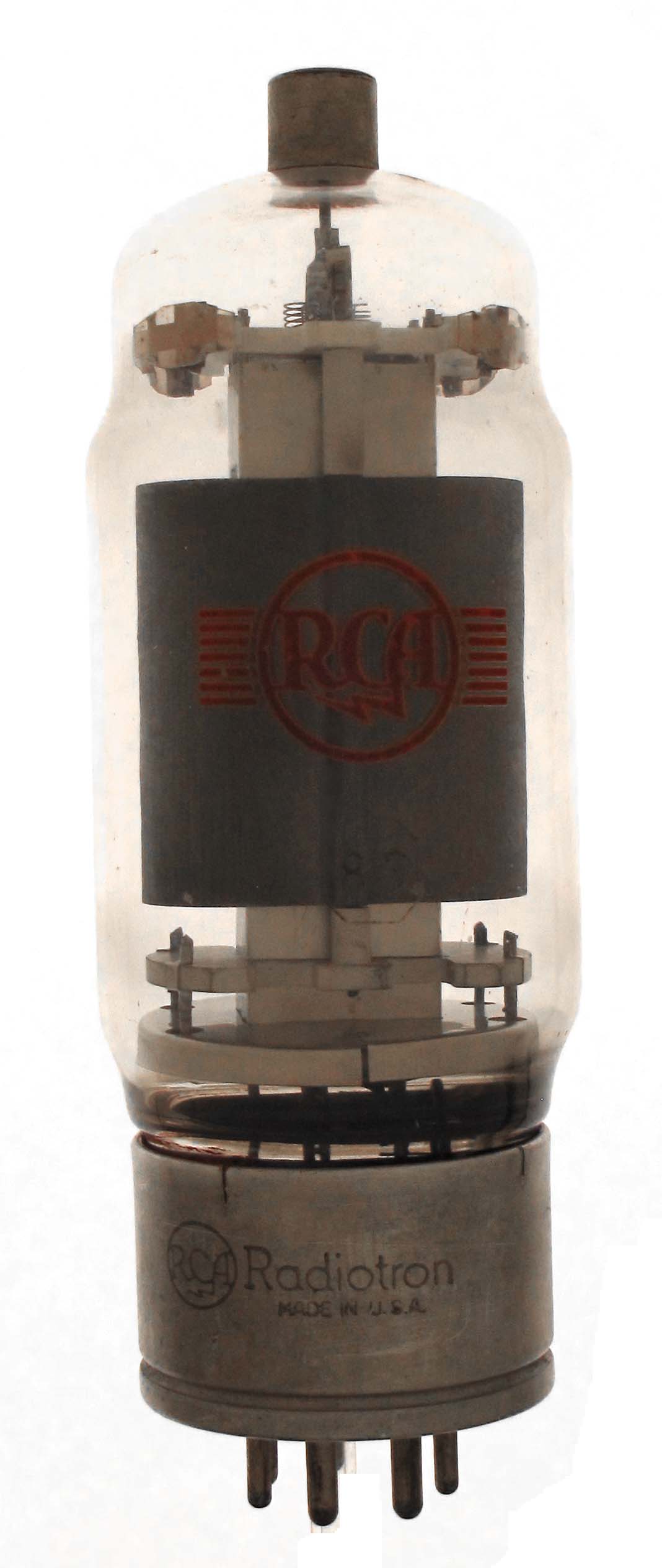 The 813 or VT-144 is a 125 watt dissipation beam pentode with full ratings to 30 MHz. First marketed by RCA in 1938, it was used in the ART-13 airborne transmitter. After the War, it continued to be one of the most successful and long-lived tubes for amateur radio. The first and second examples were made by RCA and the third and fourth (GL-813) were made by GE. The fifth was made by Amperex and the sixth was also an Amperex, but was made in France and has a brown baklite type pin insulator. The seventh was made by Kenrad, the eighth by North American Philips (NORELCO) and the ninth by Amalgamated Wireless Valve (AWV) in Australia. The tenth was made by National Union and the eleventh was made by Raytheon. The twelfth example is marked Hytron, but I believe it was made in China. The thirteenth example is a United, the fourteenth is a CEI (Germany) using only 5 pins, the fifteenth a Sylvania and the sixteenth is a Westinghouse (WL-813). The seventeenth example is marked National Electronics that was made in the U.S.S.R. and seems identical to the CEI tube with the 5 pins. The Japanese version of the 813 is the 4B13 which is different than the older Japanese UV-813. The Philips tube for the European market is the BB2/250E and a Mullard version is the QY2-100.
The 813 or VT-144 is a 125 watt dissipation beam pentode with full ratings to 30 MHz. First marketed by RCA in 1938, it was used in the ART-13 airborne transmitter. After the War, it continued to be one of the most successful and long-lived tubes for amateur radio. The first and second examples were made by RCA and the third and fourth (GL-813) were made by GE. The fifth was made by Amperex and the sixth was also an Amperex, but was made in France and has a brown baklite type pin insulator. The seventh was made by Kenrad, the eighth by North American Philips (NORELCO) and the ninth by Amalgamated Wireless Valve (AWV) in Australia. The tenth was made by National Union and the eleventh was made by Raytheon. The twelfth example is marked Hytron, but I believe it was made in China. The thirteenth example is a United, the fourteenth is a CEI (Germany) using only 5 pins, the fifteenth a Sylvania and the sixteenth is a Westinghouse (WL-813). The seventeenth example is marked National Electronics that was made in the U.S.S.R. and seems identical to the CEI tube with the 5 pins. The Japanese version of the 813 is the 4B13 which is different than the older Japanese UV-813. The Philips tube for the European market is the BB2/250E and a Mullard version is the QY2-100.
Length = 7.50" Diameter = 2.60"
Max voltage = 2250
Max current = 220 ma
Fil voltage = 10
Fil current = 5 amps
Data sheet:
GOTO INDEX
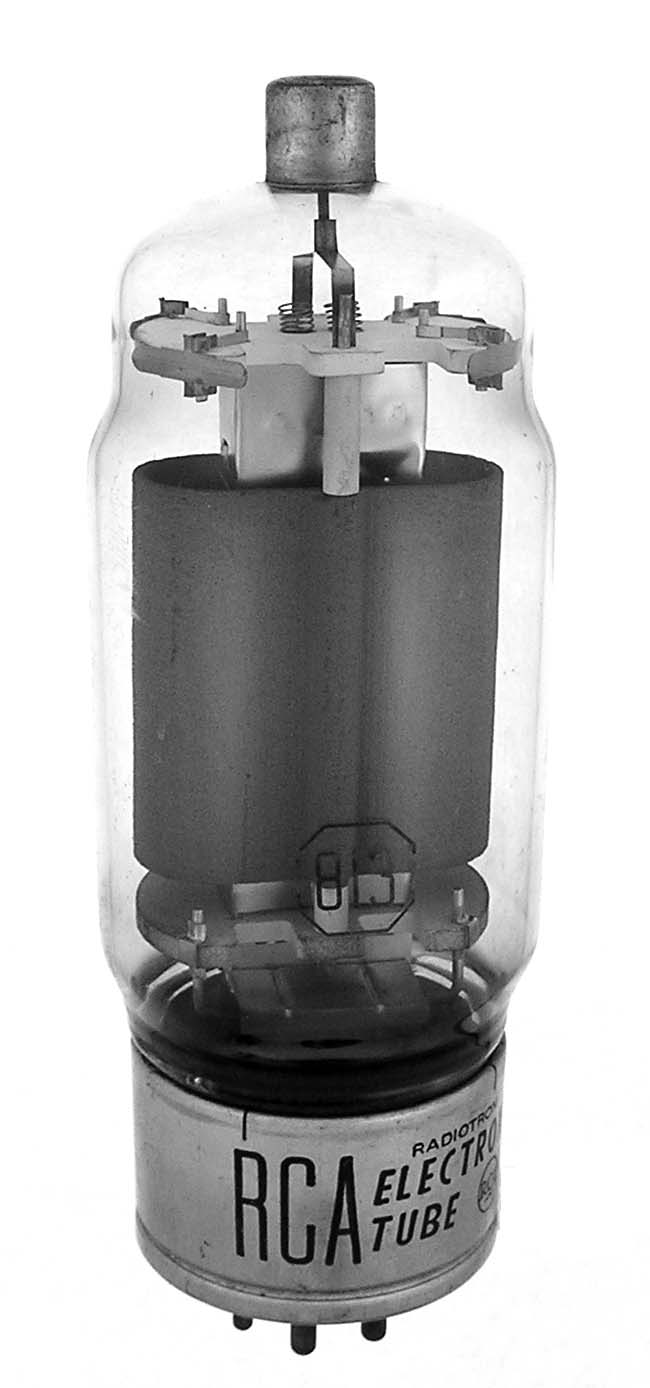
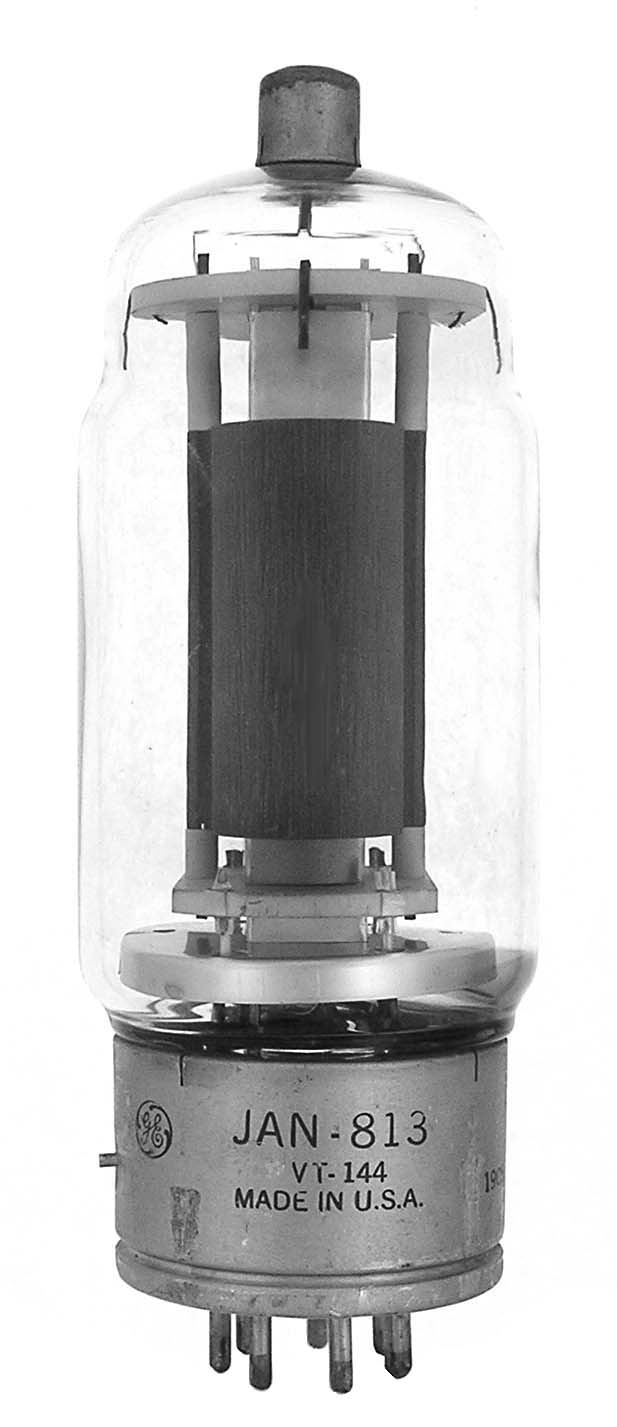
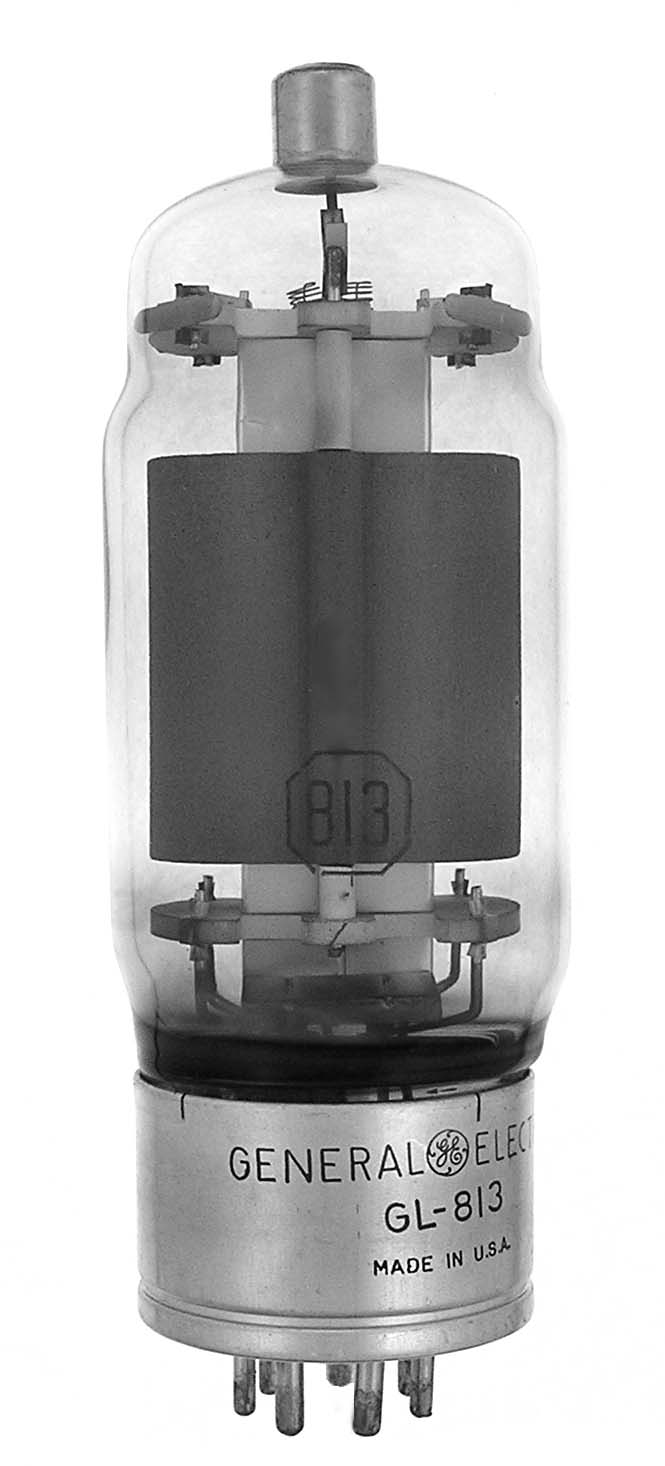
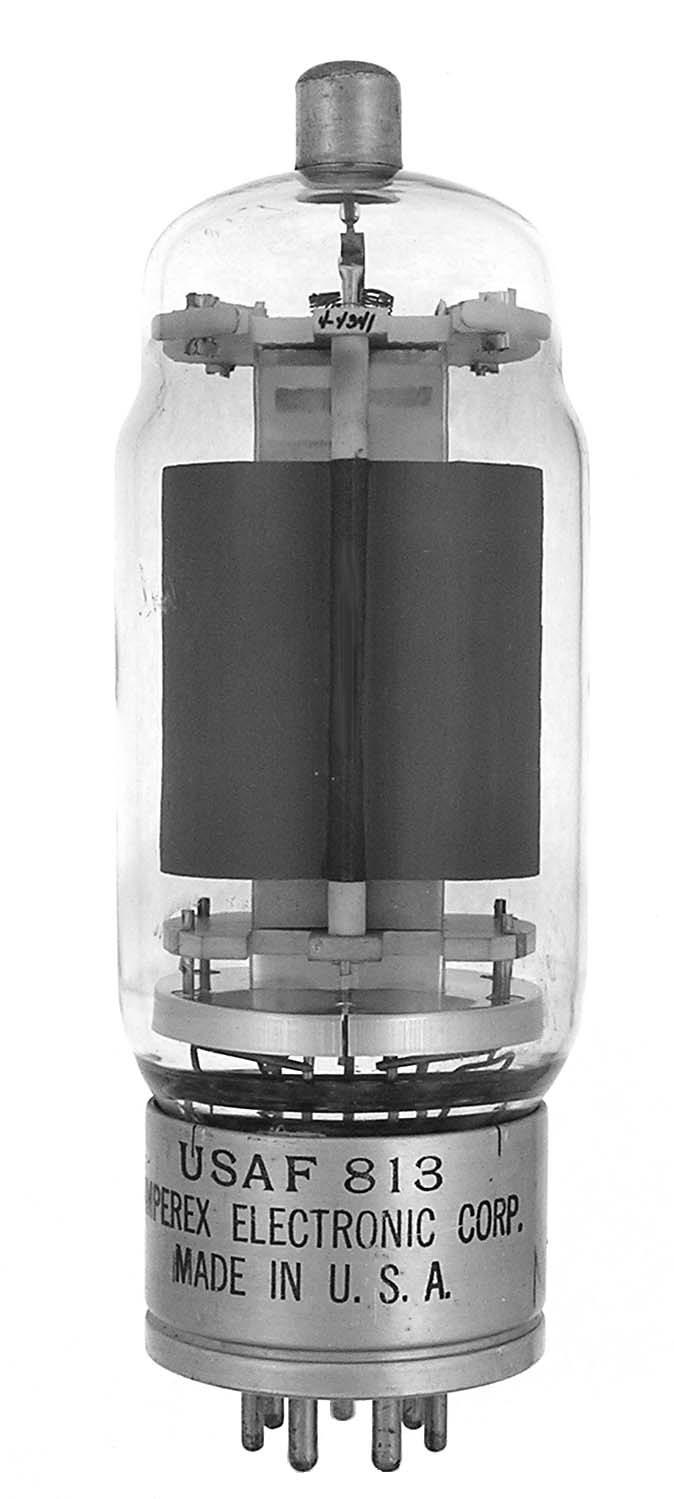
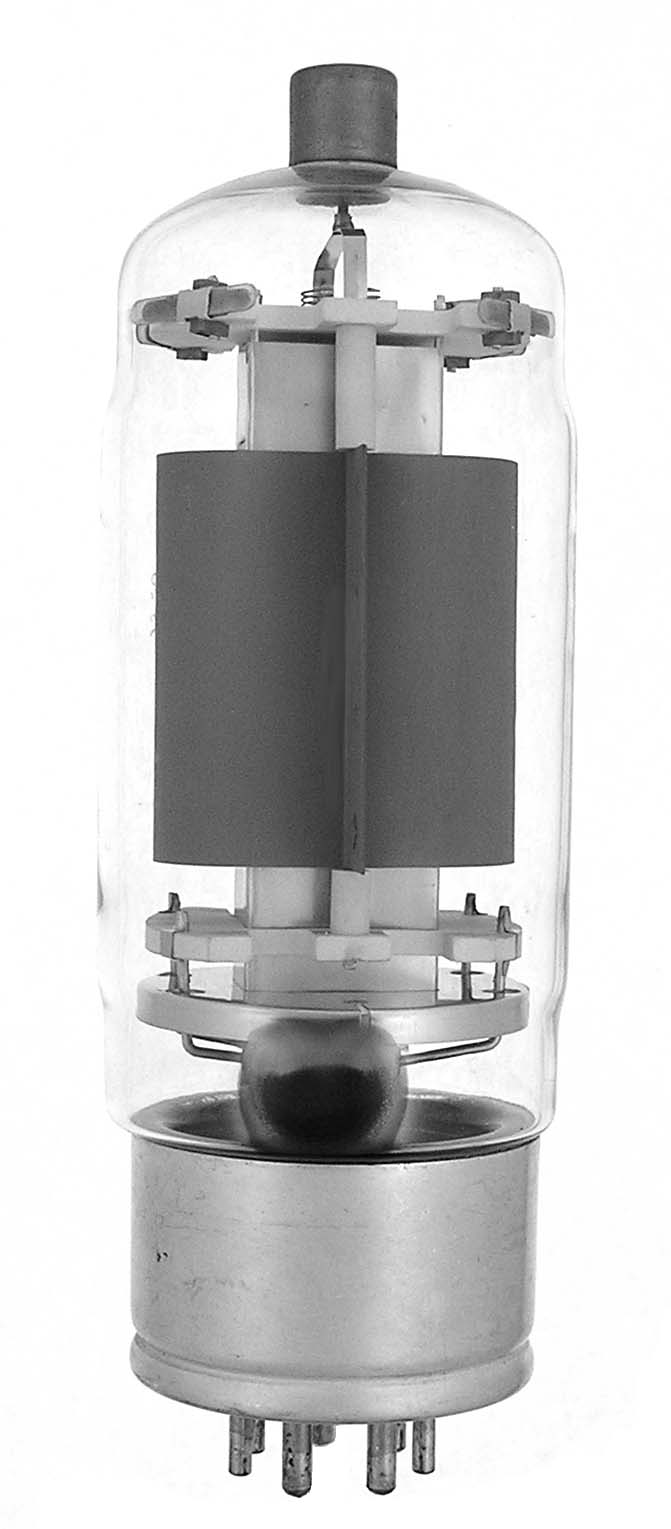
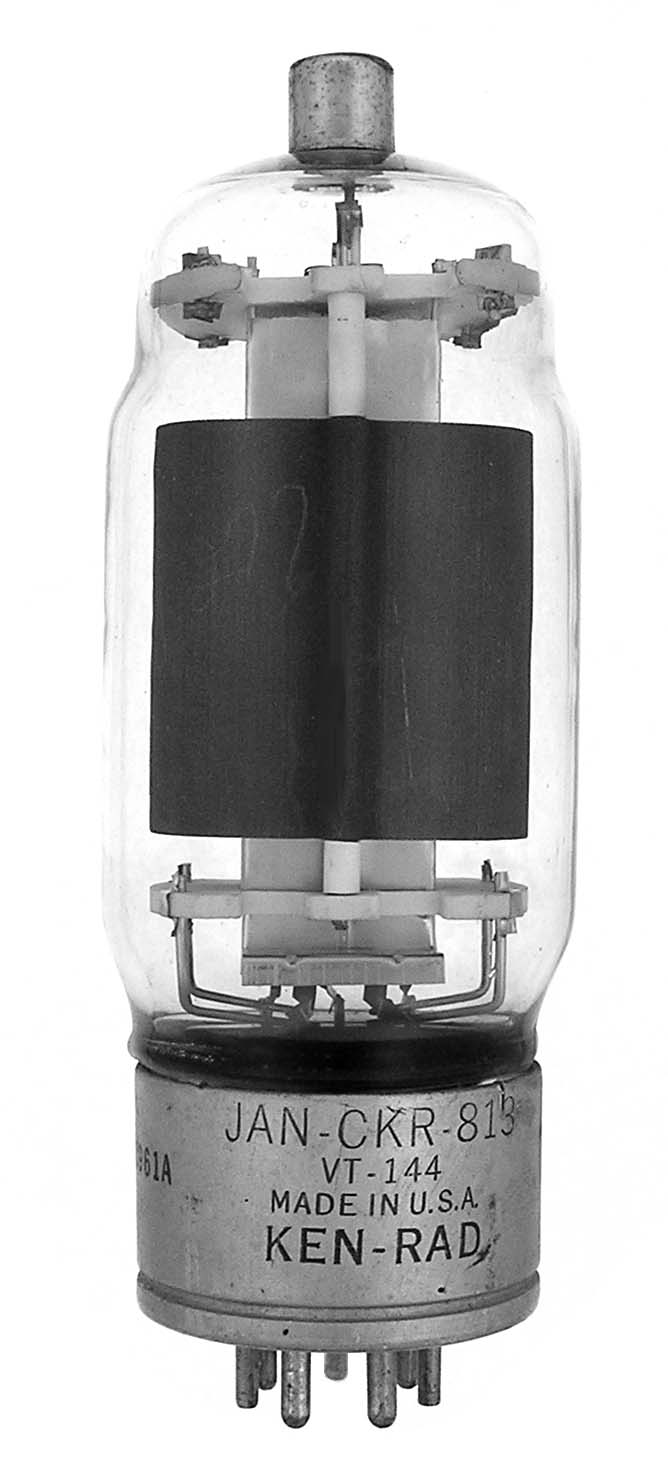
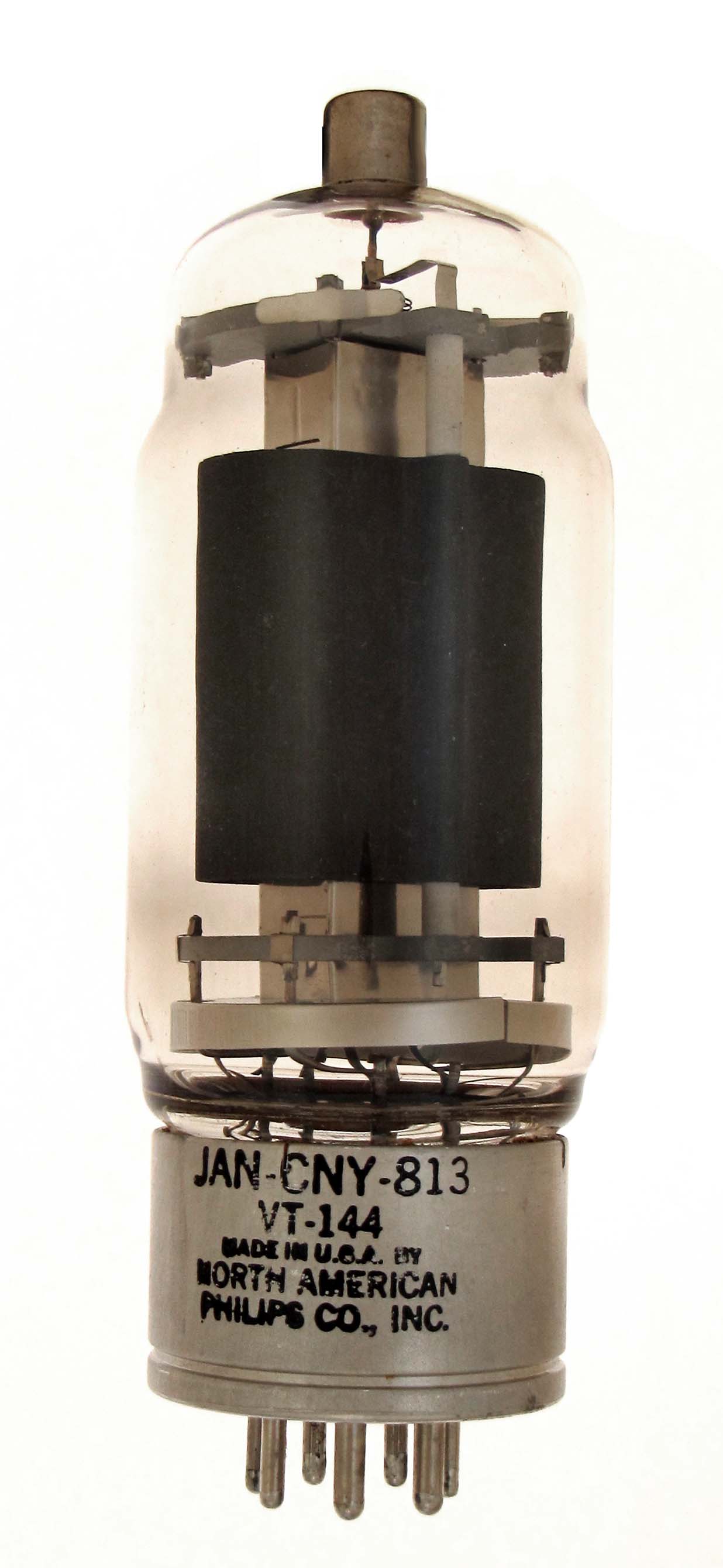
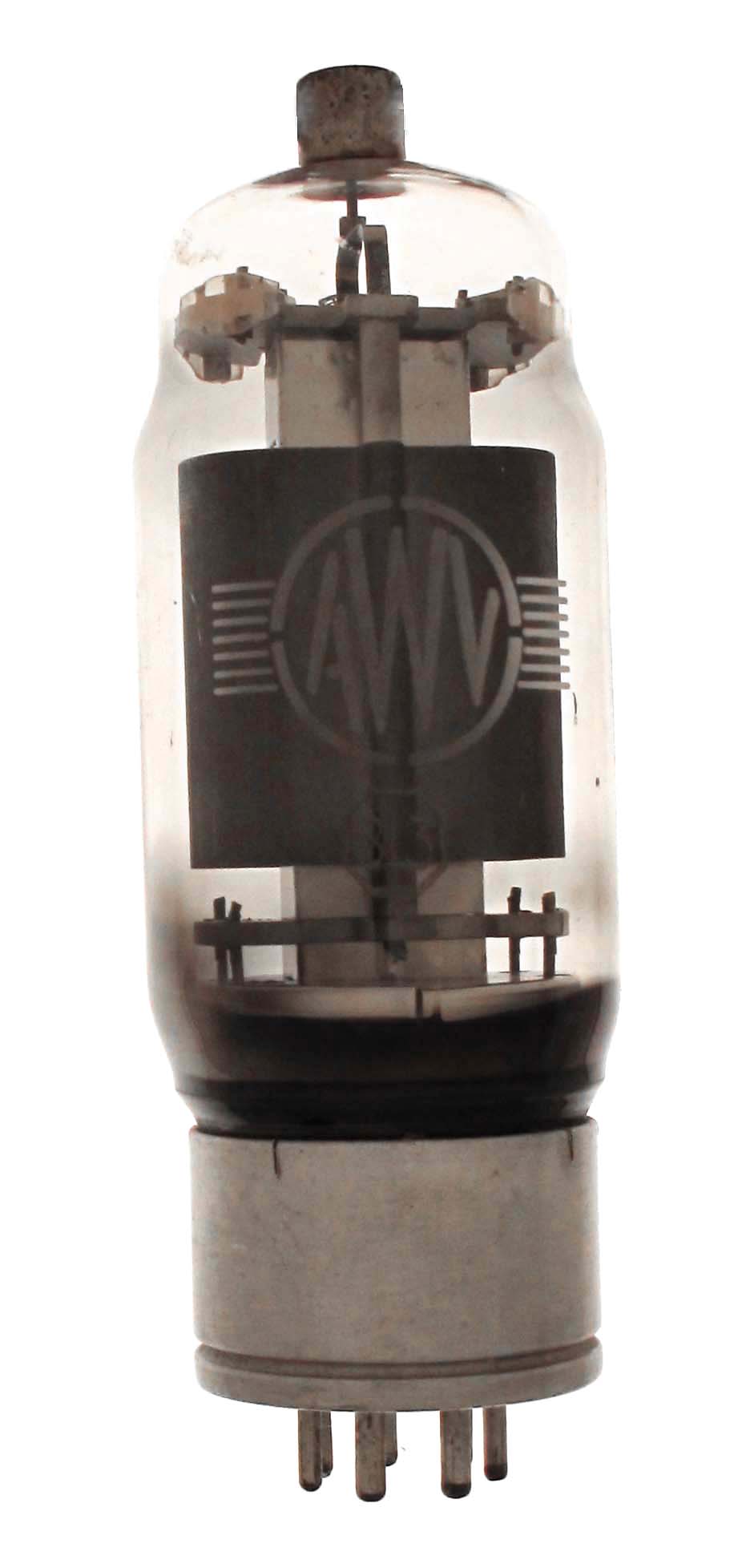
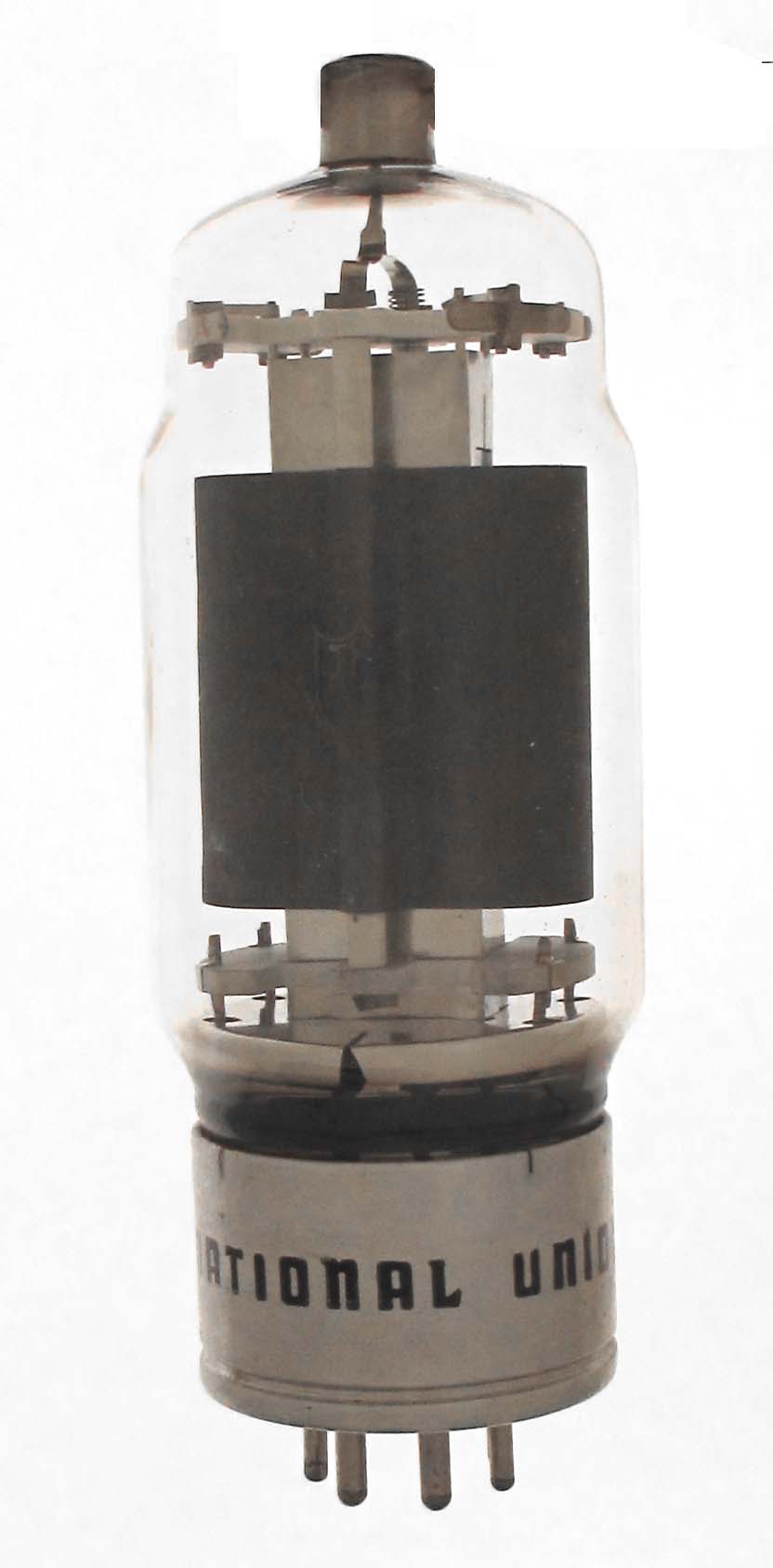
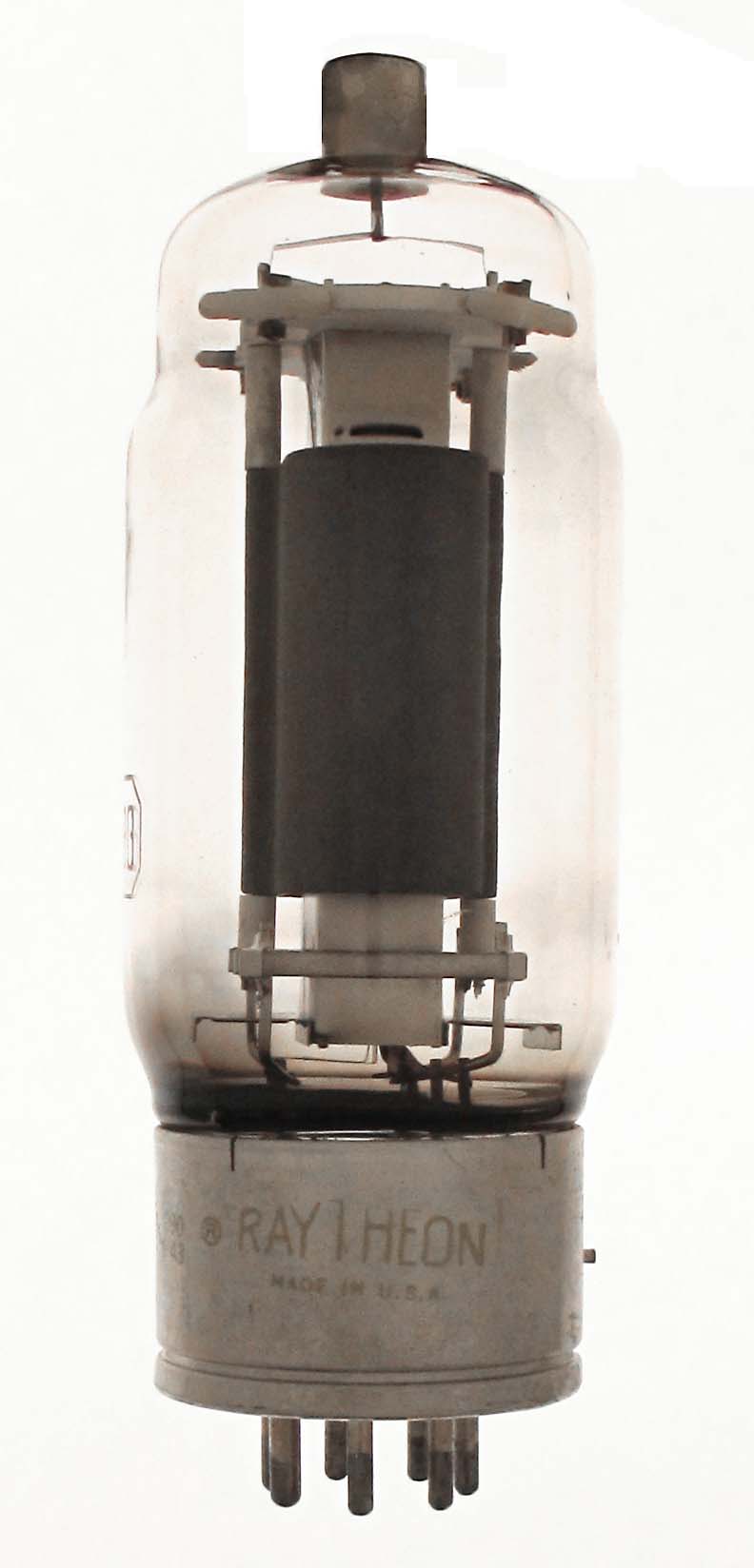
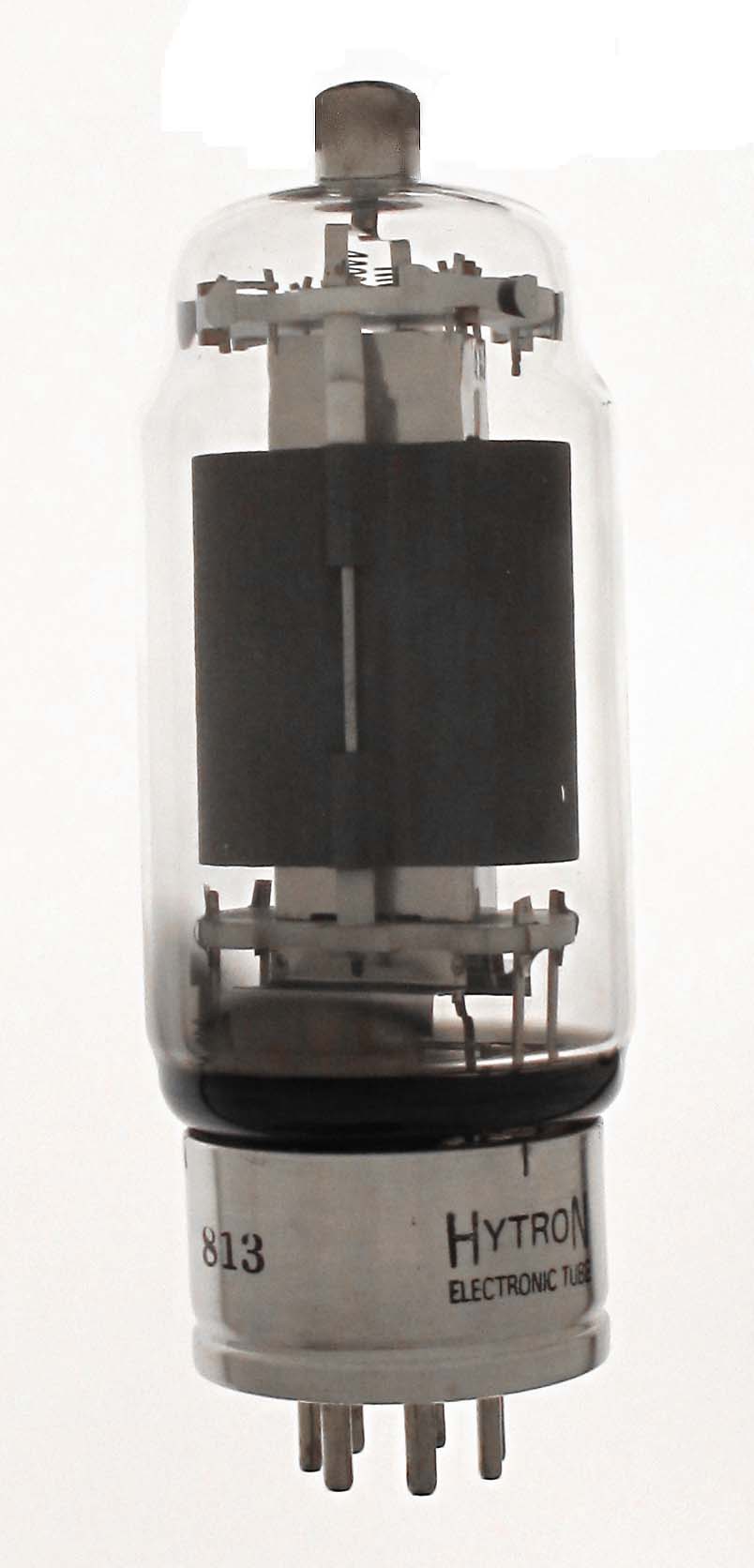
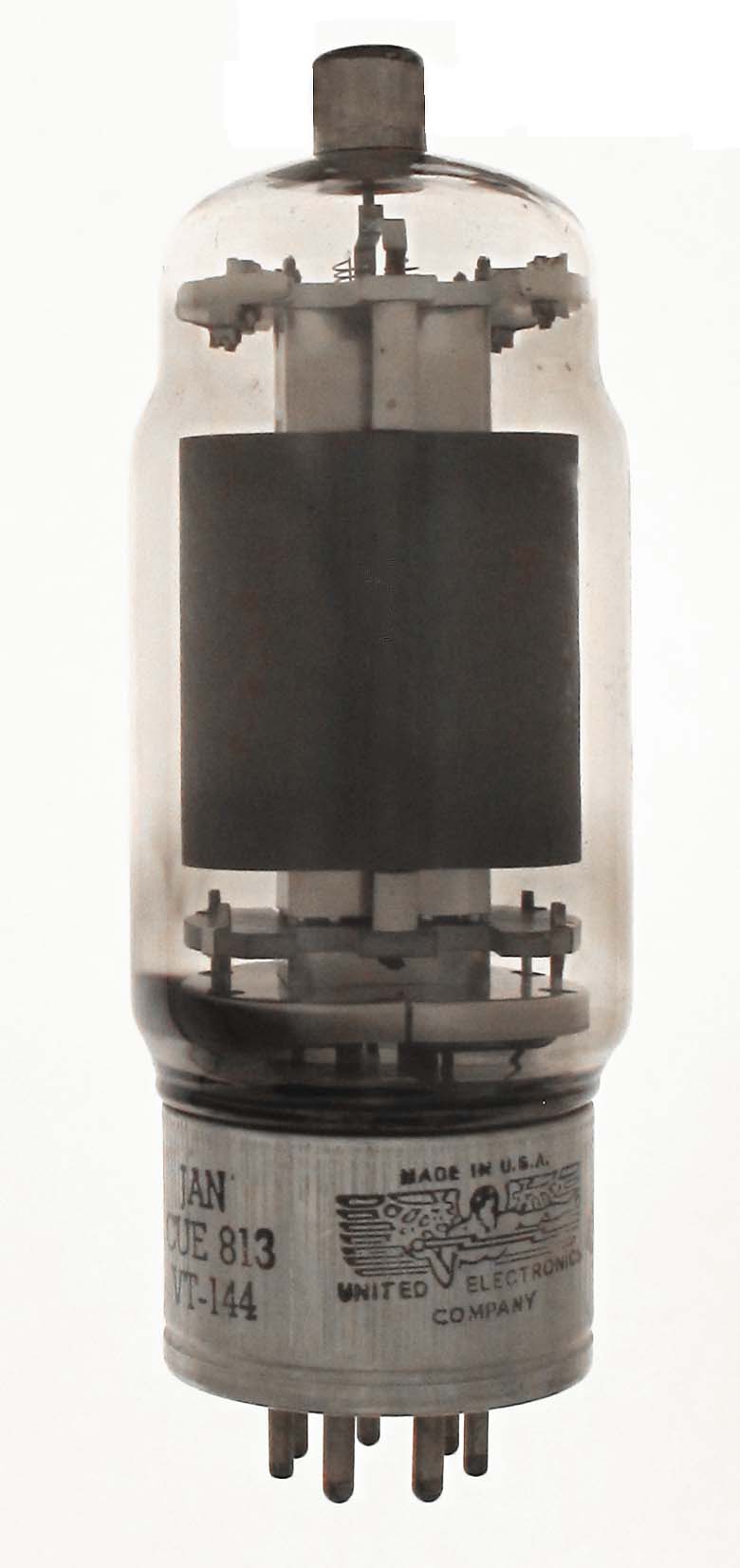
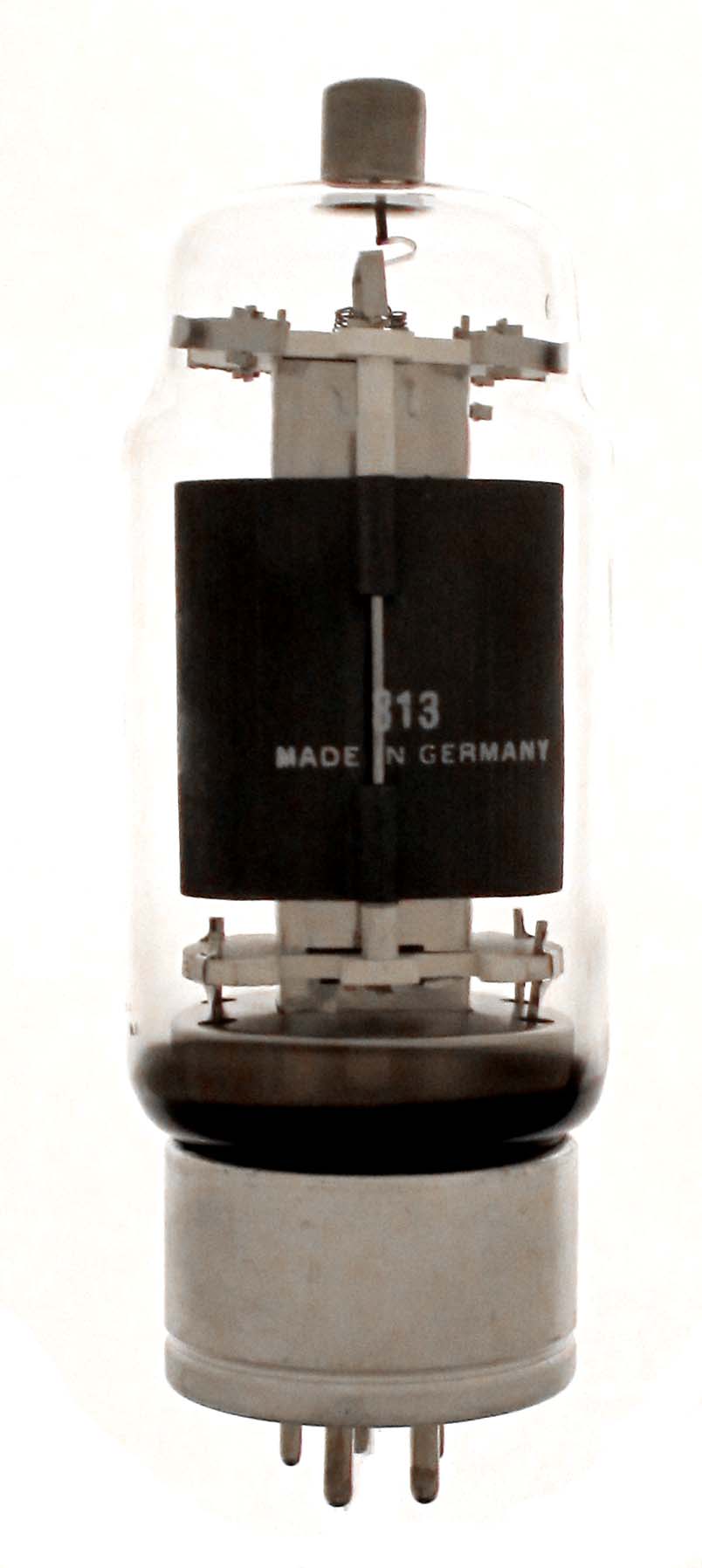
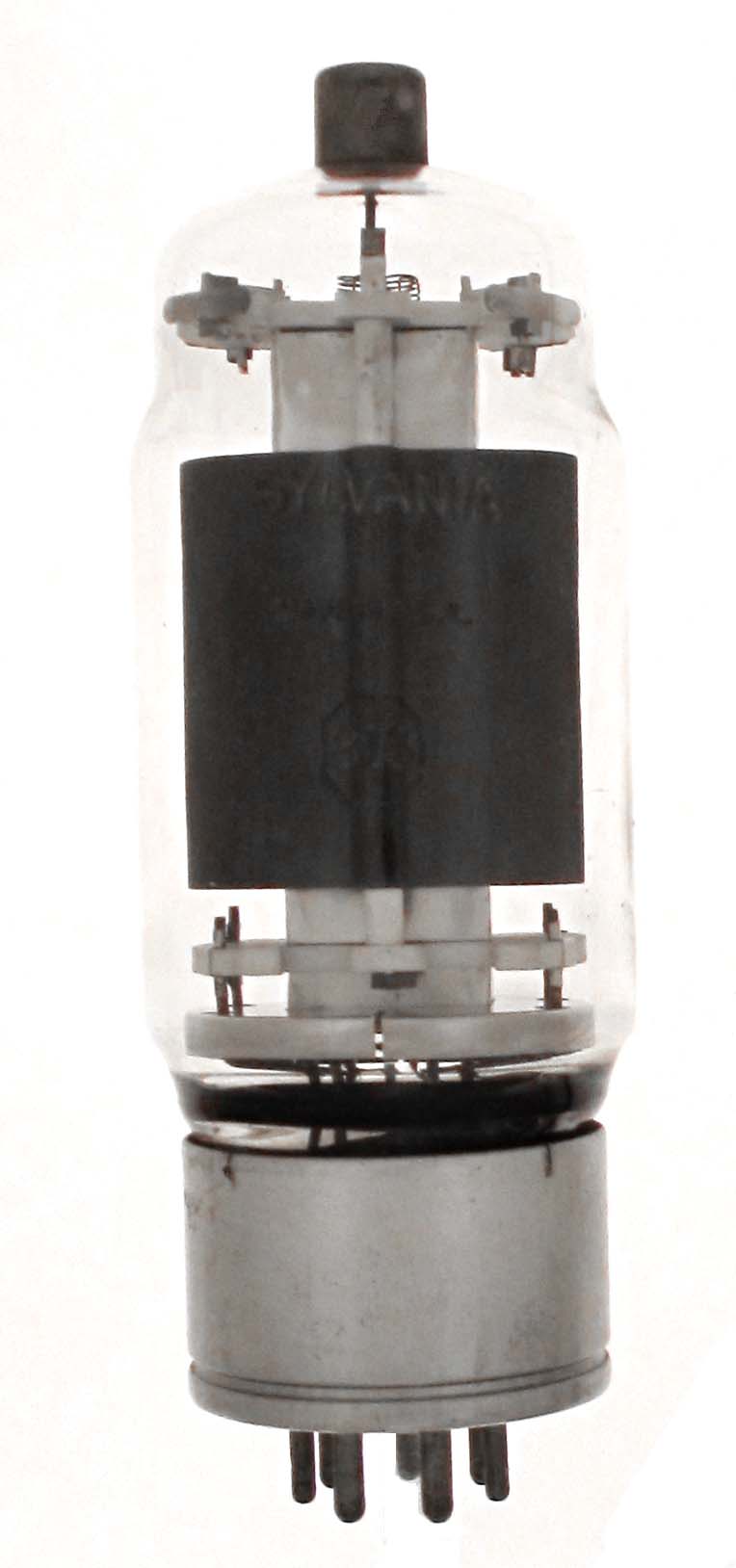
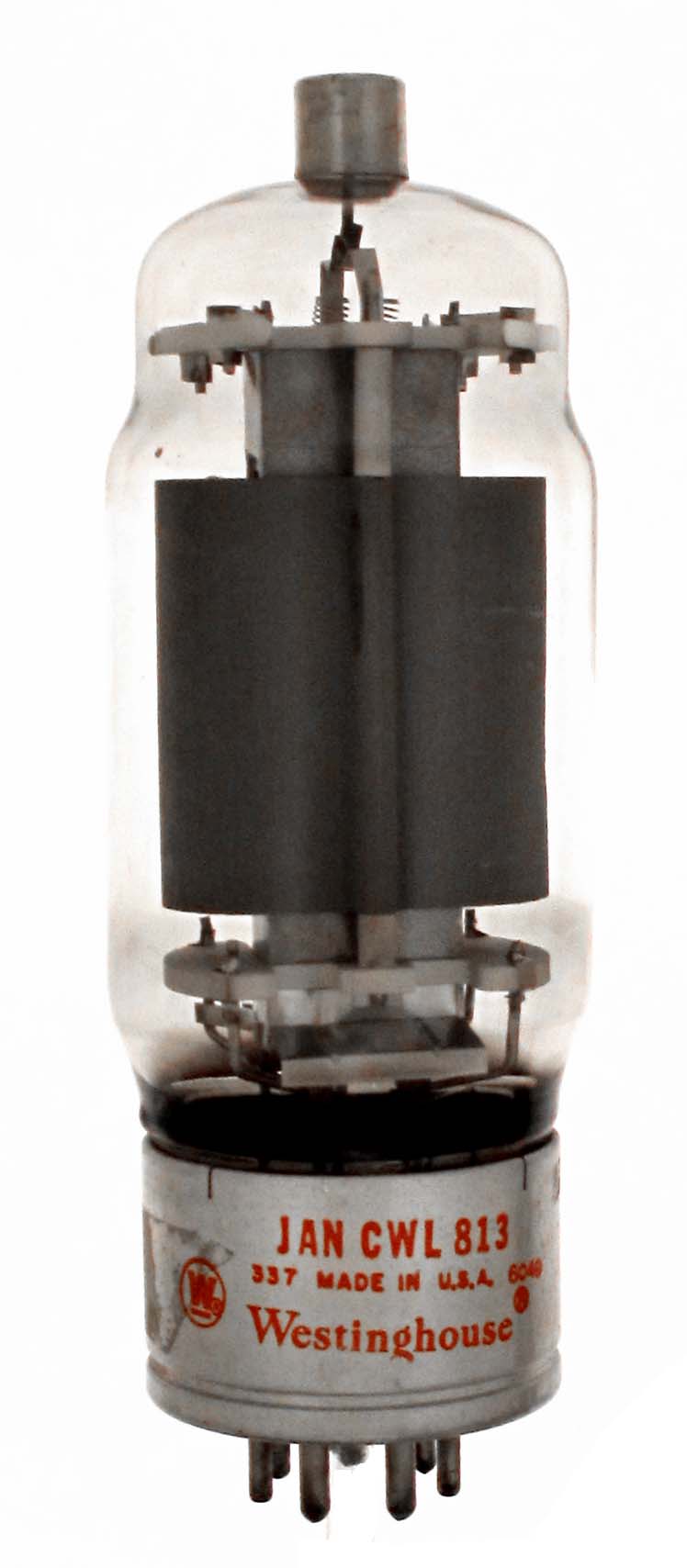
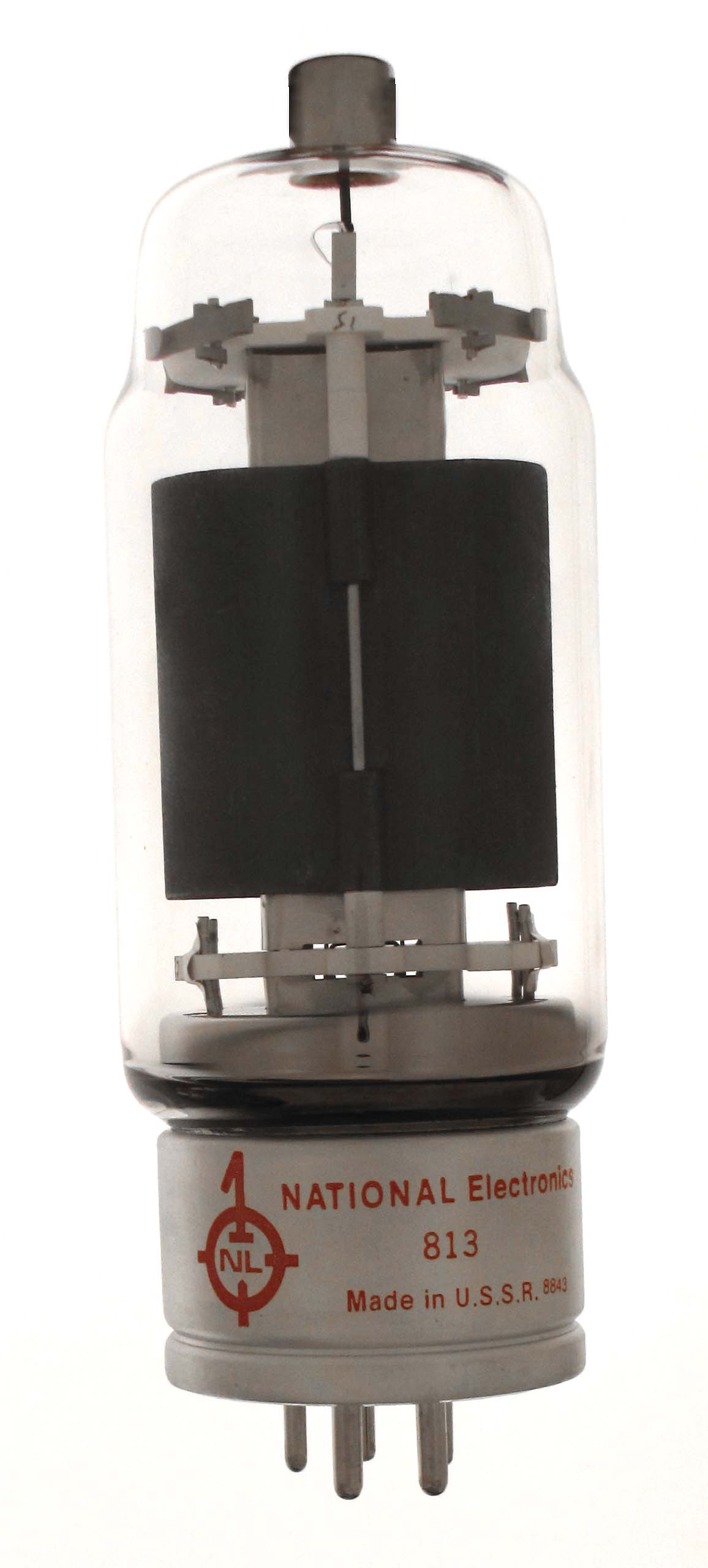
The 813 or VT-144 is a 125 watt dissipation beam pentode with full ratings to 30 MHz. First marketed by RCA in 1938, it was used in the ART-13 airborne transmitter. After the War, it continued to be one of the most successful and long-lived tubes for amateur radio. The first and second examples were made by RCA and the third and fourth (GL-813) were made by GE. The fifth was made by Amperex and the sixth was also an Amperex, but was made in France and has a brown baklite type pin insulator. The seventh was made by Kenrad, the eighth by North American Philips (NORELCO) and the ninth by Amalgamated Wireless Valve (AWV) in Australia. The tenth was made by National Union and the eleventh was made by Raytheon. The twelfth example is marked Hytron, but I believe it was made in China. The thirteenth example is a United, the fourteenth is a CEI (Germany) using only 5 pins, the fifteenth a Sylvania and the sixteenth is a Westinghouse (WL-813). The seventeenth example is marked National Electronics that was made in the U.S.S.R. and seems identical to the CEI tube with the 5 pins. The Japanese version of the 813 is the 4B13 which is different than the older Japanese UV-813. The Philips tube for the European market is the BB2/250E and a Mullard version is the QY2-100.















